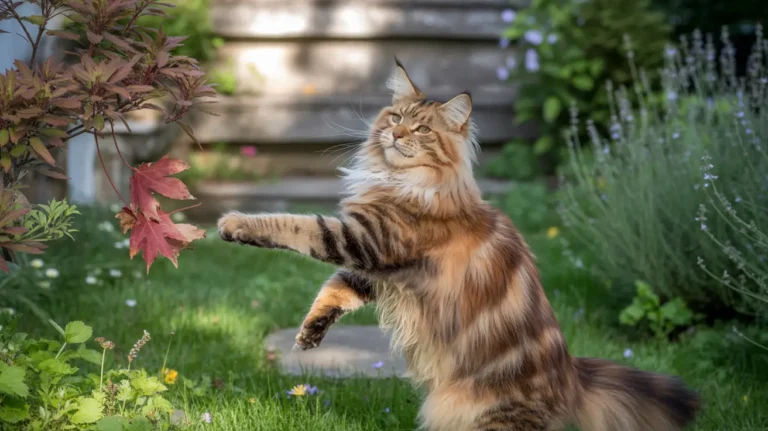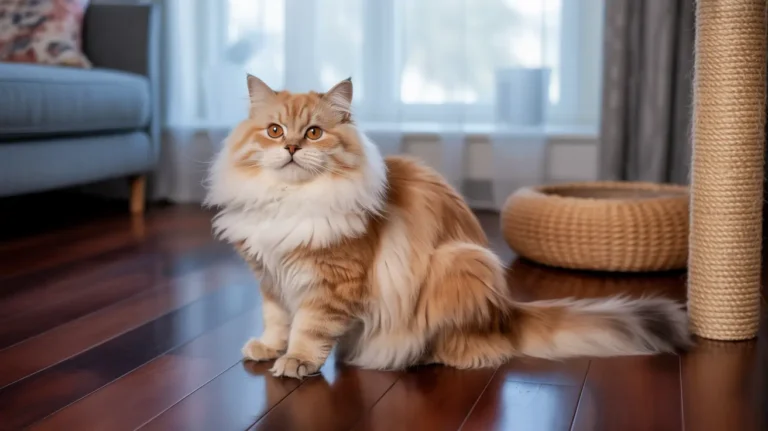Grooming of Siberian Cat: Simple Tips for a Healthy Coat
Siberian cat grooming is essential because these cats have a thick, three-layered coat that protects them from cold weather. Their fur consists of long outer hairs, a middle layer, and a soft undercoat. Even though their fur is long, it does not tangle easily, making Siberian cat grooming simpler compared to other long-haired cats.
Brushing is most important in autumn and spring when they shed more. Daily brushing helps remove loose fur and prevents mess in the house during these times. For the rest of the year, brushing once a week is usually enough to keep their coat healthy.
Starting grooming when your cat is young makes it easier as they grow. Slowly getting them used to brushing and handling helps them stay calm. Many Siberian cats enjoy grooming, making it a nice way to spend time with them.
Grooming is not just about looks—it helps keep your cat healthy. Brushing spreads natural oils, keeps the fur soft, and lets you check for fleas or skin problems. A regular grooming routine keeps your Siberian cat happy and comfortable.
The Importance of Grooming of Siberian Cat Regularly
Grooming of Siberian cat is essential for their overall health and comfort. It helps keep their coat shiny, removes tangles, and ensures their skin stays healthy. Regular grooming of Siberian cat also allows you to check for signs of irritation, pests, or any health issues.
Additionally, grooming is a great way to bond with your cat. Many Siberians enjoy the calm and attention during grooming sessions, making it an enjoyable experience for both of you. Regular grooming helps prevent matting and hairballs, which can be uncomfortable for your cat.
Keep Your Siberian Cat’s Fur Tangle-Free with Gentle Brushing
Siberian cats have a thick coat that needs regular brushing to stay clean and tangle-free. Their fur is naturally oily, which helps prevent matting, but brushing weekly removes loose hair and dirt. During shedding seasons in spring and fall, daily brushing is necessary to control shedding and prevent clumps from forming.
Using the right grooming tools makes the process easy and comfortable for your cat. A slicker brush helps remove loose hair, while a metal comb gently untangles knots. An undercoat rake is useful for shedding season, pulling out dead fur without damaging the healthy coat. Finishing with a soft brush gives their fur a smooth and shiny look.
Essential Grooming Tools and Their Uses
Step-by-Step Guide to Brushing Your Siberian Cat
Keeping Your Cat Comfortable During Grooming
Some Siberian cats love being brushed, while others take time to get used to it. If your cat resists, don’t force it—take short breaks and try again later. Speak to them in a calm, reassuring voice, and make each session a gentle and pleasant experience. Over time, they will start to enjoy it as a special bonding moment with you.
Bathing Your Siberian Cat with Care
Siberian cats are known for their love of water, but not all of them enjoy baths. If introduced early, they can get used to it, making the process much easier. Bathing helps remove loose fur, dirt, and allergens, keeping their coat fresh.
However, it should not be done too often, as it can strip away natural oils. Patience is key, and if your cat resists, it’s best to try again later instead of forcing them. Over time, many Siberians start enjoying water and may even try to join you in the shower!
Things You Need for Bathing Your Siberian Cat
Steps for a Stress-Free Bath
Bathing your Siberian cat every six to eight weeks is usually enough to keep them clean. However, if they get dirty or their coat feels greasy, an extra bath might be needed. Keeping their litter box clean also helps maintain hygiene. With patience and gentle handling, bath time can become a positive experience for both you and your cat.
Keeping Your Siberian Cat’s Nails Clean and Safe
Trimming your Siberian cat’s nails is an essential part of their grooming routine. It prevents overgrown claws from causing discomfort, reduces the risk of scratches, and helps protect furniture from damage.
Unlike outdoor cats that naturally wear down their nails, indoor Siberians need regular trimming to keep their claws at a safe length. While some cats may resist at first, patience and a gentle approach can make the process stress-free for both you and your pet.
What You Need for Nail Trimming
How to Trim Your Siberian Cat’s Nails
Regular nail trimming every 2–3 weeks keeps your cat’s claws at a healthy length and prevents painful overgrowth. If your Siberian resists, try trimming just a few nails at a time and gradually work up to a full session. Providing scratching posts can also help naturally wear down their nails between trims.
Keeping Your Siberian Cat’s Ears Clean and Healthy
Regular ear cleaning is an important part of your Siberian cat’s grooming routine. It helps prevent infections, removes dirt, and keeps their ears in good condition.
Since their ears are very sensitive, it’s important to clean them gently and only when necessary. Overcleaning can cause irritation, so check their ears weekly and clean only if you notice dirt or wax buildup.
What You Need for Ear Cleaning
How to Clean Your Siberian Cat’s Ears
Checking your cat’s ears weekly can help prevent infections. If you notice redness, swelling, a bad smell, or discharge, consult a vet immediately. Avoid using cotton swabs, as they can push dirt deeper into the ear or cause injury. Keeping their ears clean with gentle care will ensure your Siberian stays happy and healthy.
Keeping Your Siberian Cat’s Eyes Clean and Healthy
Siberian cats usually have healthy eyes, but it’s important to check them weekly for any redness, discharge, or cloudiness. Their eyes should look clear and bright, with equal-sized pupils. If you notice excessive tearing or sensitivity to light, it could be a sign of an issue that needs veterinary care.
Keeping their environment clean helps prevent dust and irritants from affecting their eyes. If there’s a minor discharge, gently wipe it away with a damp cotton pad. Avoid rubbing too hard, and if the issue persists, consult a vet to ensure your cat’s eyes stay healthy.
Dental Care for Siberian Cats
Keeping your Siberian cat’s teeth clean is important to prevent gum disease and bad breath. Regular brushing, dental chews, and vet check-ups help maintain good oral health. Starting dental care at an early age makes it easier for your cat to adjust.
Tools for Dental Care
Steps for Dental Care
Regular dental care keeps your Siberian cat’s mouth healthy and prevents painful dental problems. A simple brushing routine and the right treats can make a big difference in their overall well-being.






